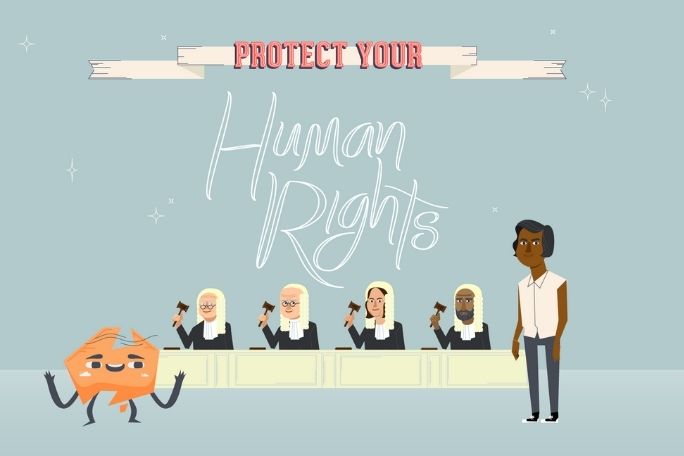Lesson Summary
In this social action lesson, students will consider actions that they can take in their local community to ensure that human rights are enjoyed by all people. Students will explore what human rights are, research some of the work being done to address human rights issues through a variety of different initiatives, and then consider the changes that could occur in their local community to ensure access to human rights for all. They will plan and deliver an action to improve the way human rights are experienced in their local community. Students will then reflect on the effectiveness of their action and the personal development that they experienced.
Essential question:
How can we improve how human rights are experienced in the community?
Essential question:
- How can we improve how human rights are experienced in the community?
Lesson guides and printables
Lesson details
Curriculum Mapping
This lesson can be used with all learning areas of the Australian Curriculum.
General capabilities: Literacy, Information and Communication Capability, Personal and Social Capability, Ethical Understanding, Intercultural Understanding.
Topic: Human Rights
Unit of work: Story of Our Rights and Freedoms, Year 7, 8, 9, 10.
Time required: 210+ mins.
Level of teacher scaffolding: High – facilitate class discussion, student research and project planning. Coordinate student delivery and showcasing of projects.
Resources Required
Student Worksheet – one per student. Device capable of presenting a website and video to the class. Human rights areas of work posters, Human Rights in Our Community table (one per group). Devices capable of web-research (enough for one per pair). Sticky-notes, butcher’s paper, markers. Project-specific resources, as identified by students in their planning (such as stationary, access to computers, etc.) Project Planning Tool, Project Checklist.
Skills
This lesson is designed to build students’ competencies in the following skills:
- Collaboration
- Empathy
- Communication
- Cultural Understanding
- Ethical Understanding
- Problem Solving
Additional Info
Throughout the Story of Our Rights and Freedoms lessons, students will consider Civics and Citizenship concepts through a human rights lens. They will critically assess the Australian system of government and the effect that it has on our rights and freedoms.
There is no universally accepted definition of human rights, and our understanding is continually developing. Some definitions include:
- The recognition and respect of peoples’ dignity
- A set of moral and legal guidelines that promote and protect the recognition of our values, our identity and access to an adequate standard of living
- The basic standards by which we can identify and measure inequality and fairness
- Those rights associated with the Universal Declaration of Human Rights (UDHR)
When we talk about human rights we usually refer to principles that have been agreed upon by countries throughout the world. These rights have been set down in international agreements and form part of international law. They can also be written into the domestic law of individual countries. Human rights cover virtually every area of human life and activity. These include:
- Civil and political rights, such as freedom of speech and freedom from torture
- Economic and social rights, such as the rights to health and education
- Individual rights, including the right to a fair trial
- Collective rights, or those rights that apply to groups of people, such as the right to a healthy environment or to live on one’s ancestral land.
The UDHR is an international document that recognises the basic rights and fundamental freedoms to which all human beings are entitled. It was adopted by the United Nations General Assembly on 10 December 1948 and marks a key milestone in the history of human rights. The Magna Carta, though limited in who it protected, was an important precursor to the UDHR.
Click here to watch a video about the Magna Carta.
You can view the entire text of the Universal Declaration of Human Rights, and the other core international human rights treaties, on the United Nation’s website or by downloading RightsApp (free from the iTunes App store).


Welcome back!
Don't have an account yet?
Log in with:
By signing up to Cool.org you consent and agree to Cool's privacy policy to
store, manage and process your personal information. To read more, please see
our privacy policy here(Opens in new tab).
Create your free Cool.org account.
Many of our resources are free, with an option to upgrade to Cool+ for premium content.
Already have an account?
Sign up with:
By signing up to Cool.org you consent and agree to Cool's privacy policy to
store, manage and process your personal information. To read more, please see
our privacy policy here(Opens in new tab).